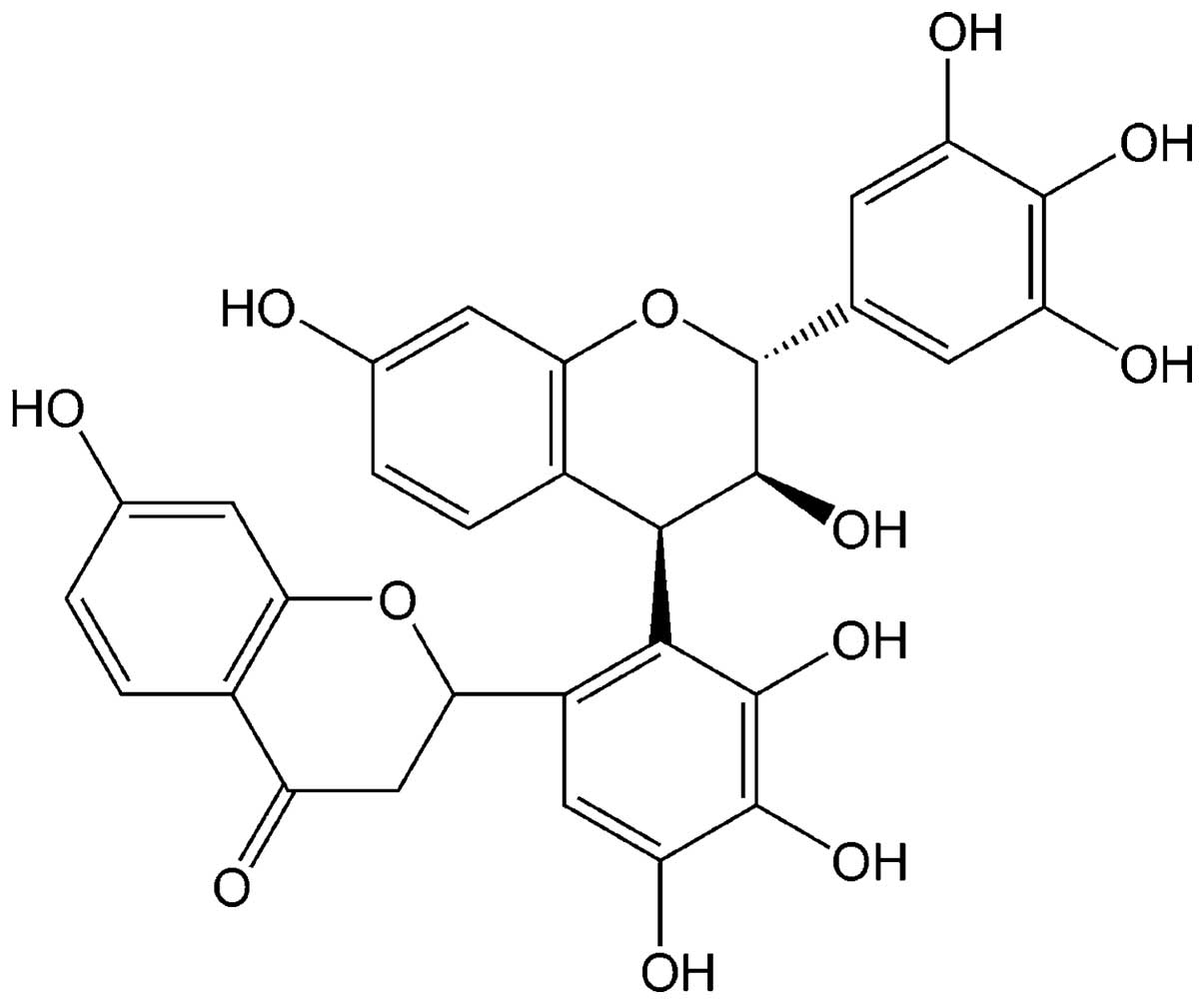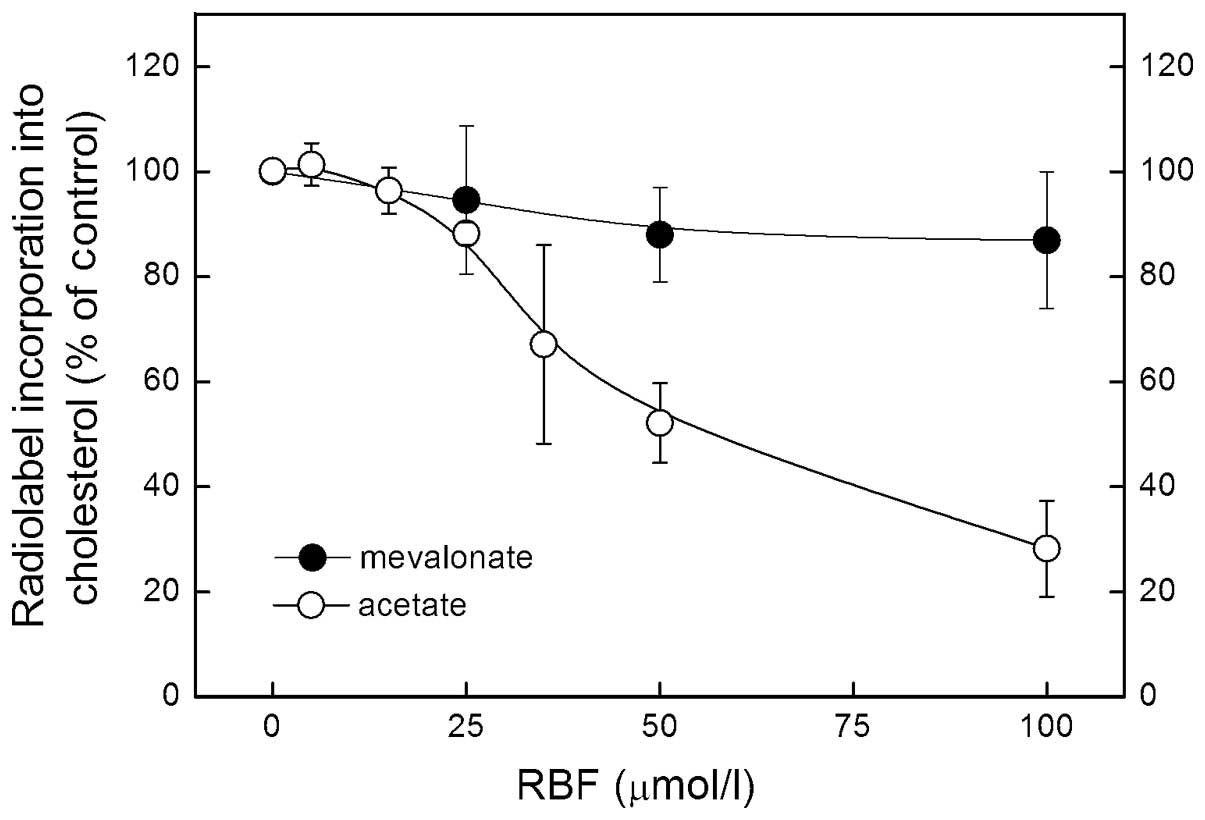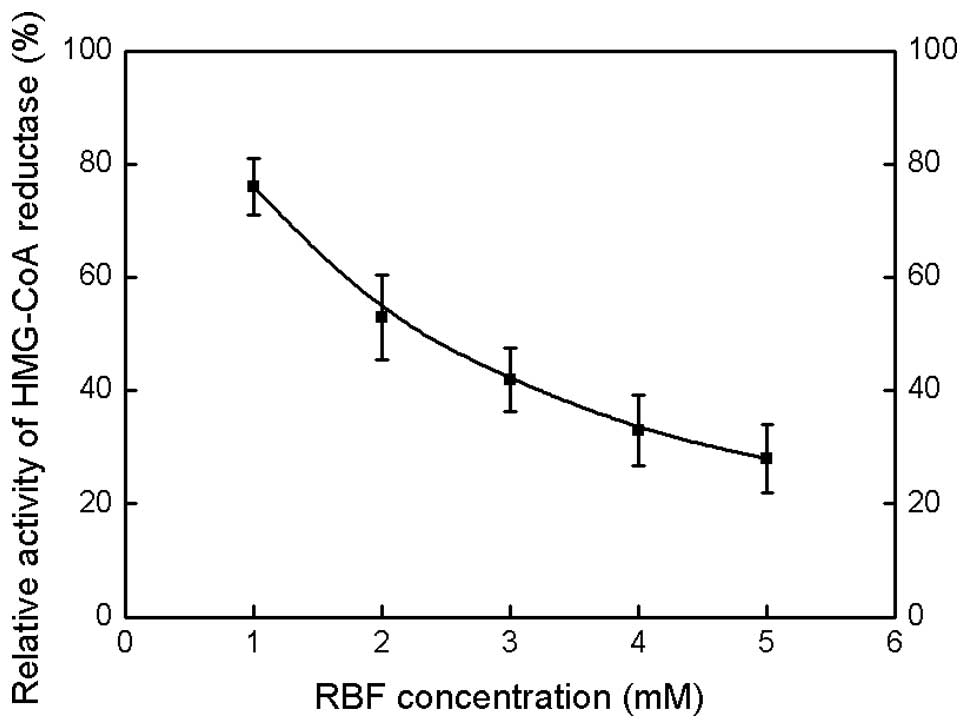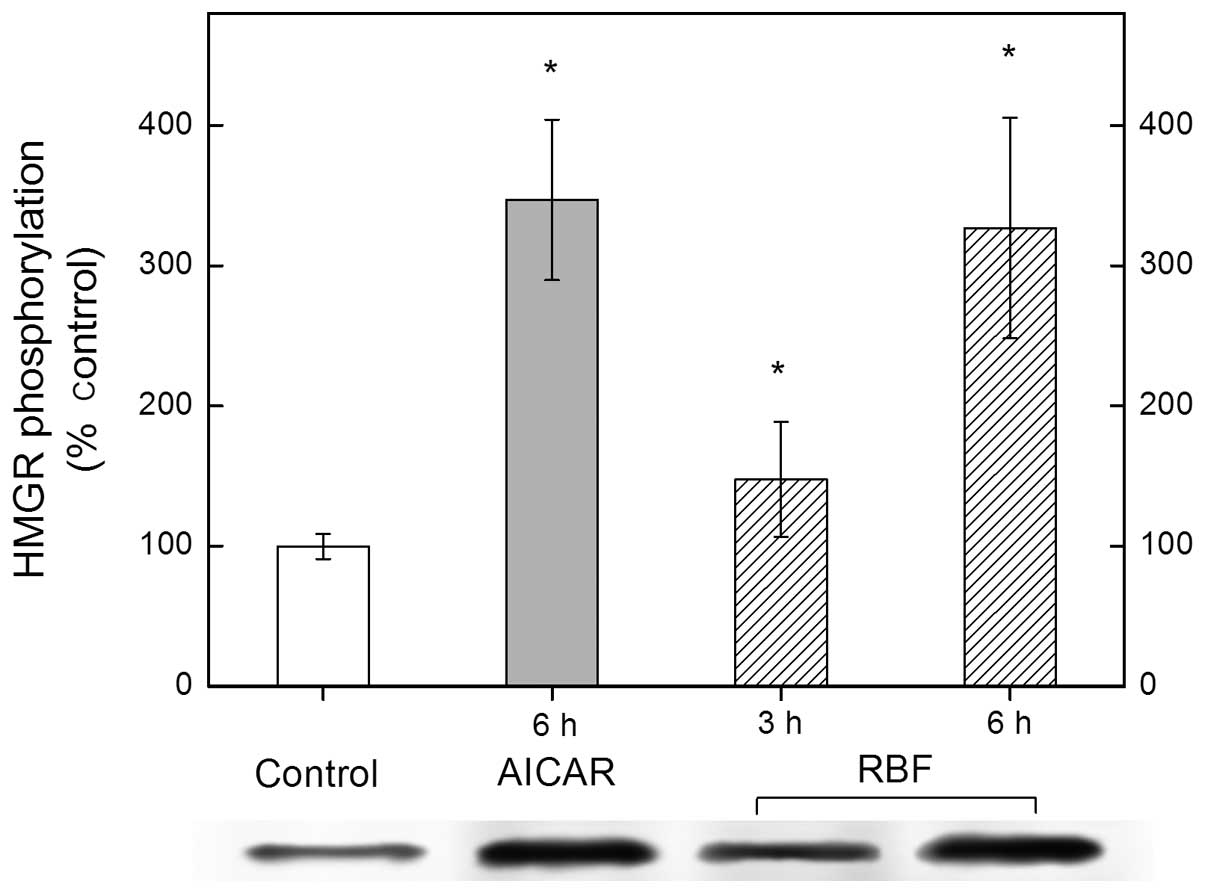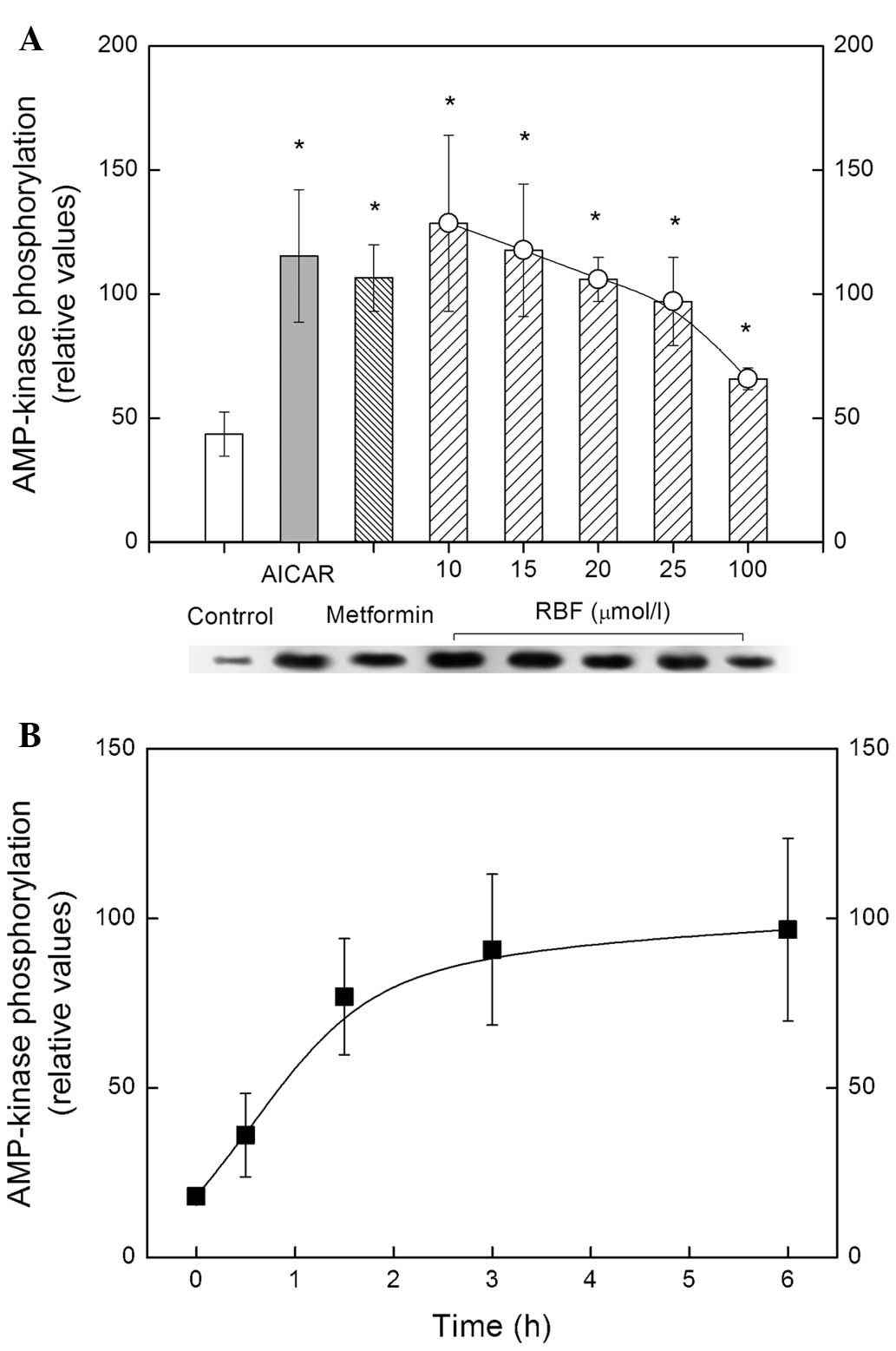|
1
|
Ikarashi N, Toda T, Okaniwa T, et al:
Anti-obesity and anti-diabetic effects of acacia polyphenol in
obese diabetic KKAy mice fed high-fat diet. Evid Based Complement
Alternat Med. 2011:9520312011.PubMed/NCBI
|
|
2
|
Ståhlberg D, Rudling M, Angelin B, et al:
Hepatic cholesterol metabolism in human obesity. Hepatology.
25:1447–1450. 1997.
|
|
3
|
Kaul D: Molecular link between
cholesterol, cytokines and atherosclerosis. Mol Cell Biochem.
219:65–71. 2001. View Article : Google Scholar : PubMed/NCBI
|
|
4
|
Havsteen BH: The biochemistry and medical
significance of the flavonoids. Pharmacol Ther. 96:67–202. 2002.
View Article : Google Scholar : PubMed/NCBI
|
|
5
|
Gebhardt R: Variable influence of
kaempferol and myricetin on in vitro hepatocellular cholesterol
biosynthesis. Planta Med. 69:1071–1074. 2003. View Article : Google Scholar : PubMed/NCBI
|
|
6
|
Tamura T, Inoue N, Ozawa M, et al:
Peanut-skin polyphenols, procyanidin A1 and
epicatechin-(4β→6)-epicatechin-(2β→O→7, 4β→8)-catechin, exert
cholesterol micelle-degrading activity in vitro. Biosci Biotechnol
Biochem. 77:1306–1309. 2013.
|
|
7
|
Friedlander EJ, Caras IW, Lin LF and Bloch
K: Supernatant protein factor facilitates intermembrane transfer of
squalene. J Biol Chem. 255:8042–8045. 1980.PubMed/NCBI
|
|
8
|
Brito PM, Devillard R, Nègre-Salvayre A,
et al: Resveratrol inhibits the mTOR mitogenic signaling evoked by
oxidized LDL in smooth muscle cells. Atherosclerosis. 205:126–134.
2009. View Article : Google Scholar : PubMed/NCBI
|
|
9
|
Singh DK, Banerjee SD and Porter TD: Green
and black tea extracts inhibit HMG-CoA reductase and activate AMP
kinase to decrease cholesterol synthesis in hepatoma cells. J Nutr
Biochem. 20:816–822. 2009. View Article : Google Scholar : PubMed/NCBI
|
|
10
|
Bursill CD and Roach PD: Modulation of
cholesterol metabolism by the green tea polyphenol
(−)-epigallocatechin gallate in cultured human liver (HepG2) cells.
J Agric Food Chem. 54:1621–1626. 2006.
|
|
11
|
Berrougui H, Cloutier M, Isabelle M and
Khali AL: Phenolic-extract from argan oil (Argania spinosa
L.) inhibits human low-density lipoprotein (LDL) oxidation and
enhances cholesterol efflux from human THP-1 macrophages.
Atherosclerosis. 184:389–396. 2006.PubMed/NCBI
|
|
12
|
Espenshade PJ and Hughes AL: Regulation of
sterol synthesis in eukaryotes. Annu Rev Genet. 41:401–427. 2007.
View Article : Google Scholar : PubMed/NCBI
|
|
13
|
Mokashi V, Singh DK and Porter TD:
Supernatant protein factor stimulates HMG-CoA reductase in cell
culture and in vitro. Arch Biochem Biophys. 433:474–480. 2005.
View Article : Google Scholar : PubMed/NCBI
|
|
14
|
Beg ZH, Stonik JA and Brewer HB Jr:
Modulation of the enzymic activity of 3-hydroxy-3-methylglutaryl
coenzyme A reductase by multiple kinase systems involving
reversible phosphorylation: a review. Metabolism. 36:900–917. 1987.
View Article : Google Scholar
|
|
15
|
Carling D, Clarke PR, Zammit VA and Hardie
DG: Purification and characterization of the AMP-activated protein
kinase. Copurification of acetyl-CoA carboxylase kinase and
3-hydroxy-3-methylglutaryl-CoA reductase kinase activities. Eur J
Biochem. 186:129–136. 1989. View Article : Google Scholar : PubMed/NCBI
|
|
16
|
Towler MC and Hardie DG: AMP-activated
protein kinase in metabolic control and insulin signaling. Circ
Res. 100:328–341. 2007. View Article : Google Scholar : PubMed/NCBI
|
|
17
|
Heller RA and Shrewsbury MA:
3-Hydroxy-3-methylglutaryl coenzyme A reductase from rat liver. Its
purification, properties, and immunochemical studies. J Biol Chem.
251:3815–3822. 1976.PubMed/NCBI
|
|
18
|
Kleinsek DA, Ranganathan S and Porter JN:
Purification of 3-hydroxy-3-methylglutaryl-coenzyme A reductase
from rat liver. Proc Natl Acad Sci USA. 74:1431–1435. 1977.
View Article : Google Scholar : PubMed/NCBI
|
|
19
|
Beg ZH, Stonik JA and Brewer HB Jr:
Purification and characterization of 3-hydroxy-3-methylglutaryl
coenzyme A reductase from chicken liver. FEBS Lett. 80:123–129.
1977. View Article : Google Scholar : PubMed/NCBI
|
|
20
|
Beg ZH, Stonik JA and Brewer HB Jr:
3-Hydroxy-3-methylglutaryl coenzyme A reductase: regulation of
enzymatic activity by phosphorylation and dephosphorylation. Proc
Natl Acad Sci USA. 75:3678–3682. 1978. View Article : Google Scholar : PubMed/NCBI
|
|
21
|
Zang M, Xu S, Maitland-Toolan KA, et al:
Polyphenols stimulate AMP-activated protein kinase, lower lipids,
and inhibit accelerated atherosclerosis in diabetic LDL
receptor-deficient mice. Diabetes. 55:2180–2191. 2006. View Article : Google Scholar : PubMed/NCBI
|



